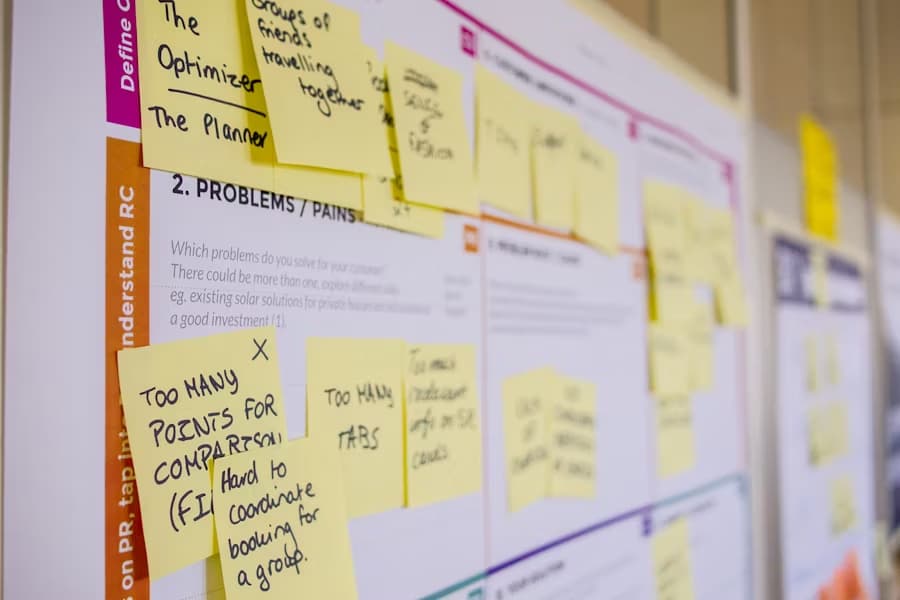In today’s fast-paced world, effective time management is crucial for personal and professional success. With numerous demands on our time, mastering the art of managing time efficiently can significantly impact productivity and overall well-being. This blog post will delve into proven time management techniques, essential activities, strategies, and practical tips to help you enhance your time management skills and achieve your goals.
Essential Activities for Effective Time Management
Prioritization: The Key to Effective Time Management
Prioritization is the cornerstone of effective time management. By identifying and focusing on high-priority tasks, individuals can allocate their time and energy more efficiently. One popular method for prioritizing tasks is the Eisenhower Matrix, which categorizes tasks into four quadrants based on their urgency and importance. This technique helps individuals distinguish between what is truly important and what is merely urgent, allowing them to make informed decisions about where to direct their efforts.
Another effective approach to prioritization is the ABCD method, which involves labeling tasks as A (very important), B (important), C (nice to do), and D (delegate). This method encourages individuals to tackle high-priority tasks first, ensuring that critical objectives are met before addressing less pressing matters.
Example of Eisenhower Matrix:
| Quadrant | Urgent & Important | Important, Not Urgent |
|---|---|---|
| High Priority | Complete immediately | Schedule for later |
| Low Priority | Delegate or eliminate | Monitor and reassess |
By consistently applying these prioritization techniques, individuals can focus their time and attention on tasks that align with their goals and contribute to long-term success.
Goal Setting: Aligning Actions with Objectives
Setting clear and achievable goals is fundamental to effective time management. Whether in a personal or professional context, establishing specific, measurable, attainable, relevant, and time-bound (SMART) goals provides a roadmap for prioritizing tasks and allocating resources effectively.
Moreover, breaking down larger goals into smaller, manageable tasks can prevent individuals from feeling overwhelmed and facilitate steady progress. This approach not only enhances productivity but also fosters a sense of accomplishment as milestones are achieved along the way.
Strategic goal setting also involves regular review and adjustment. By periodically assessing progress and recalibrating goals as needed, individuals can ensure that their time and efforts remain aligned with their evolving priorities and aspirations.
List of SMART Goals:
- Increase monthly sales by 15% within the next quarter;
- Complete professional certification course by the end of the year;
- Publish two articles per month to expand online presence;
- Reduce weekly meeting duration by 20% to improve time efficiency.
Time Blocking: Structuring Tasks for Optimal Efficiency
Time blocking is a powerful technique that involves scheduling specific blocks of time for dedicated tasks or activities. By segmenting the day into focused intervals, individuals can minimize distractions and optimize their concentration on particular responsibilities.
This approach allows for deep work, a concept popularized by Cal Newport, wherein individuals engage in undisturbed, concentrated work periods to maximize productivity and creativity. Time blocking also facilitates better control over one’s schedule, reducing the likelihood of task overlap or neglect.
Moreover, incorporating buffer time between blocks can accommodate unexpected interruptions or provide brief mental breaks, contributing to overall work-life balance and sustained performance.

Strategies to Enhance Time Management and Achieve Goals
Pomodoro Technique: Harnessing Focus through Intervals
The Pomodoro Technique, developed by Francesco Cirillo, is a time management method that revolves around working in focused intervals, typically 25 minutes, followed by a short break. After completing four consecutive intervals, a longer break is taken.
This approach capitalizes on the principles of timeboxing and interval training, leveraging the human brain’s capacity for sustained focus within defined time frames. By alternating between concentrated work and brief rest periods, individuals can maintain high levels of productivity while mitigating mental fatigue.
Steps to Implement the Pomodoro Technique:
- Choose a task to be accomplished;
- Set a timer for 25 minutes;
- Work on the task until the timer rings;
- Take a short break (5 minutes);
- Repeat the process for four intervals, then take a longer break (15-30 minutes).
The Pomodoro Technique has gained widespread acclaim for its ability to enhance focus, manage distractions, and promote a sense of urgency, making it an invaluable tool for optimizing time management and task completion.
Technology Utilization: Leveraging Tools for Efficiency
In the digital age, a myriad of technological tools and applications are available to streamline time management and boost productivity. From calendar apps and project management software to note-taking platforms and communication tools, leveraging technology can significantly enhance organizational skills and task efficiency.
Utilizing shared calendars and scheduling apps can facilitate seamless coordination of meetings and deadlines, while task management platforms enable individuals to track and prioritize assignments collaboratively. Additionally, note-taking applications and cloud storage solutions offer convenient ways to capture ideas, store information, and access resources from any location.
List of Productivity Tools:
- Calendar Apps: Google Calendar, Microsoft Outlook;
- Task Management Platforms: Trello, Asana, Jira;
- Note-Taking Applications: Evernote, OneNote, Notion;
- Cloud Storage Solutions: Google Drive, Dropbox, iCloud.
By harnessing the capabilities of these technological resources, individuals can optimize their time management practices and capitalize on the benefits of digital innovation.
Delegation: Empowering Teams and Streamlining Workflow
Delegation is a vital skill for effective time management, particularly in professional settings. By entrusting specific tasks to capable team members or collaborators, individuals can free up valuable time to focus on higher-priority responsibilities or strategic initiatives.
Effective delegation involves clear communication, assignment of appropriate authority, and consideration of each team member’s strengths and expertise. By distributing workload strategically, leaders can foster a culture of empowerment and collaboration while maximizing overall productivity.
Furthermore, delegating tasks cultivates a sense of ownership and accountability among team members, promoting a more efficient and streamlined workflow.
Time Audit: Identifying Time Wasters and Opportunities for Improvement
Conducting a time audit involves tracking and analyzing how one’s time is spent to identify areas of inefficiency and opportunities for improvement. This exercise can reveal patterns and habits that may be hindering productivity and provide valuable insights into where time can be better allocated.
By keeping a log of daily activities and tasks, individuals can gain a comprehensive understanding of their time usage and make informed decisions about how to optimize it. This process can also highlight areas where tasks can be delegated or eliminated altogether, freeing up time for more critical responsibilities.
Steps to Conduct a Time Audit:
- Keep a log of all activities and tasks for a week;
- Categorize each activity as productive, unproductive, or neutral;
- Analyze the data to identify patterns and areas for improvement;
- Make adjustments to daily routines and prioritize tasks accordingly.
Mindfulness: Cultivating Focus and Reducing Distractions
Practicing mindfulness involves intentionally focusing one’s attention on the present moment and being fully engaged in the task at hand. By cultivating this state of awareness, individuals can minimize distractions and improve their ability to concentrate on essential responsibilities.
Mindfulness techniques, such as deep breathing exercises and meditation, can also reduce stress and promote mental clarity, contributing to overall well-being and sustained productivity.
Batch Processing: Streamlining Similar Tasks for Efficiency
Batch processing involves grouping similar tasks together and completing them in a single block of time. This technique allows individuals to leverage momentum and minimize context switching, leading to increased efficiency and reduced mental fatigue.
For example, responding to emails, making phone calls, and completing administrative tasks can be batched together to optimize time usage and minimize interruptions.
By implementing batch processing as a regular practice, individuals can streamline their workflow and maximize productivity by capitalizing on the benefits of focused task completion.
Multitasking: A Myth in Time Management
Contrary to popular belief, multitasking is not an effective time management strategy. In fact, attempting to juggle multiple tasks simultaneously can lead to decreased productivity, increased errors, and mental exhaustion.
Research has shown that the human brain is not designed to handle multiple complex tasks at once, and attempting to do so can actually decrease overall efficiency.
Procrastination Management: Overcoming the Habit of Delaying Tasks
Procrastination is a common obstacle to effective time management. It involves delaying or avoiding tasks that are perceived as difficult, unpleasant, or overwhelming. However, procrastination can lead to missed deadlines, increased stress, and decreased productivity.
To overcome this habit, individuals can utilize strategies such as breaking down tasks into smaller, manageable steps, setting specific deadlines, and creating accountability through sharing goals with others.
Self-Care: Prioritizing Well-Being for Optimal Performance
In the pursuit of productivity, it is crucial to prioritize self-care and well-being. This includes getting enough sleep, eating nutritious meals, and engaging in physical activity.
Neglecting self-care can lead to burnout, decreased motivation, and reduced cognitive function, all of which can hinder effective time management and productivity.
By prioritizing self-care and incorporating it into daily routines, individuals can maintain their physical and mental well-being, leading to sustained performance and success.
Conclusion
Effective management of daily schedules is a crucial skill for achieving personal and professional goals. By implementing strategies such as prioritization, goal setting, blocking specific periods for tasks, and delegation, individuals can optimize their daily routines and boost productivity.
Moreover, incorporating mindfulness, self-care, and the use of technology can further enhance these management practices and contribute to overall well-being and success.



